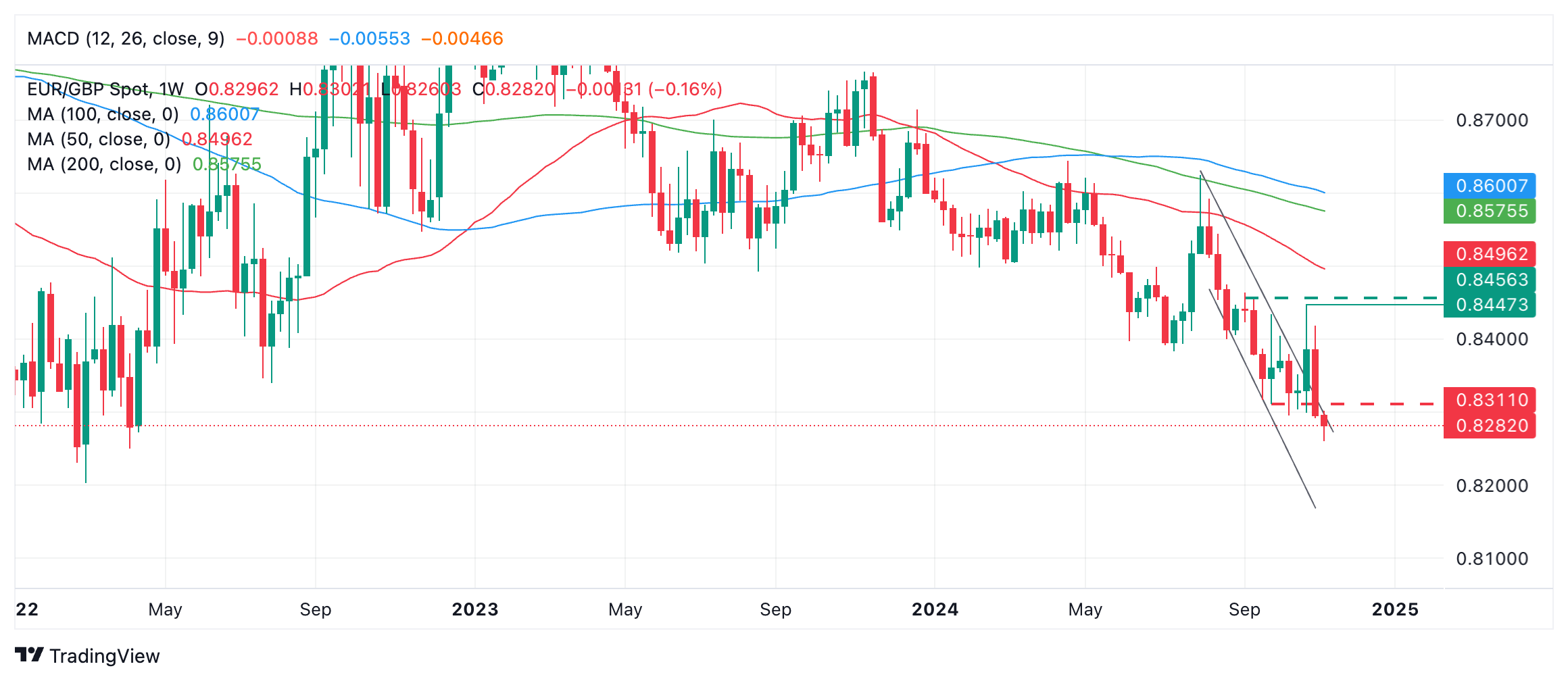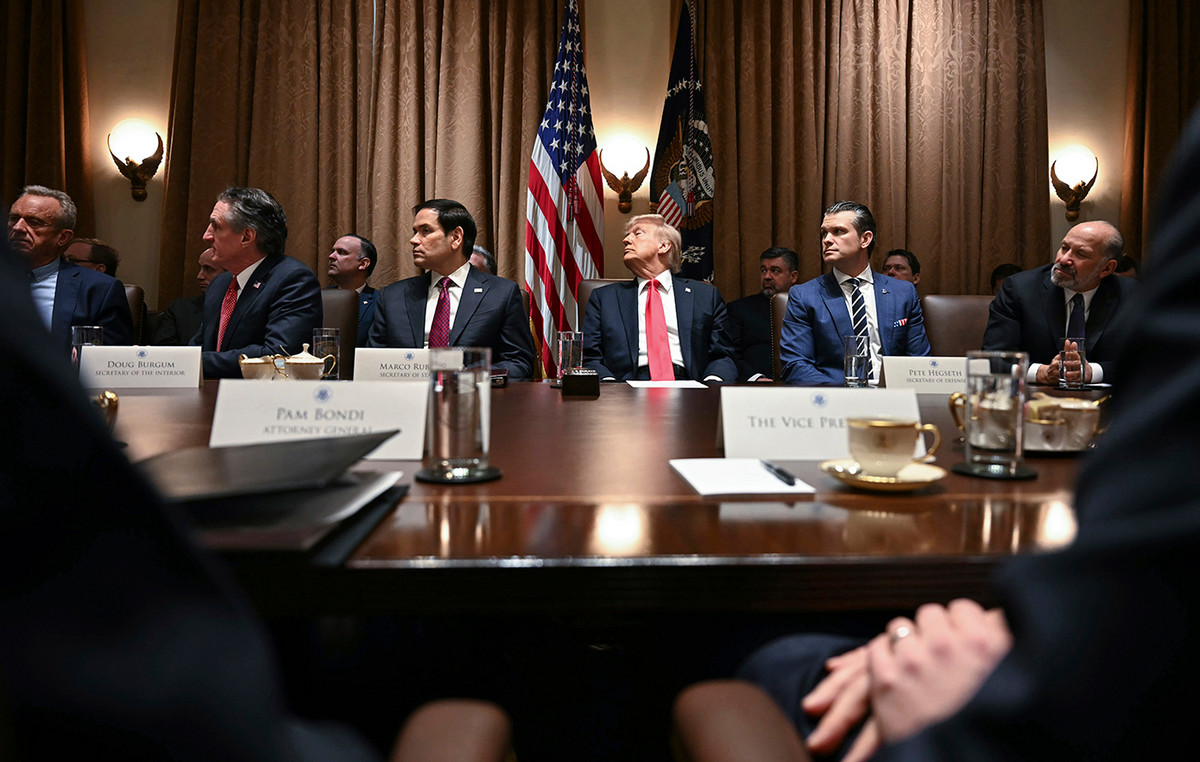- EUR/GBP is in a downtrend and at 2.5 year lows, however, the fundamentals do not support a reversal.
- The Eurozone economy is expected to be hit hardest by US trade tariffs amid already weak growth.
- Political instability in Germany and the GBP’s resilience to geopolitical risk are other factors weighing on the pair.
EUR/GBP trades flat on Tuesday as it finds its footing after a five-day losing streak. The pair is trading at more than two and a half year lows in the 0.8280 area, driven by a mix of Euro (EUR) weakness and British Pound (GBP) resilience. It is in a downtrend on all major time frames.
EUR/GBP Weekly Chart
The Euro is depreciating due to a combination of fears that the imposition of tariffs by the US will affect already weak growth and political uncertainty in Germany. This was reflected in lower ZEW sentiment data for both the Eurozone and Germany released on Tuesday.
Economists at Nomura forecast that Eurozone gross domestic product (GDP) will fall by “a minimum of 0.3 percentage points cumulatively over 2025-26” as a result of US trade tariffs introduced by the Trump administration.
Interest rates in the UK are expected to remain higher than in the Eurozone, as growth prospects in the UK remain positive compared to the Eurozone. Relatively higher interest rates will strengthen the Pound compared to the Euro, which could drive EUR/GBP lower.
“The political crisis in Germany, the ECB’s moderate policy towards the Fed and the BoE, and the threat of tariffs on EU exports to the US (500 billion euros annually, or 2.5% of the GDP) are combining for a bleak outlook (for the Euro) towards the end of the year,” says Kenneth Broux, Senior Strategist at Societe Generale, “…we don’t see any lasting rebound materializing until after the vote of confidence in Germany and early elections,” he adds.
The Pound is more resilient to geopolitical shocks compared to the Euro, according to Goldman Sachs analysts. The GBP is also more positively aligned with risk and has a “positive beta to overall risk” the bank adds. If US stocks continue to rally as a result of the outlook due to the new administration in Washington, this should further support the Pound.
The Bank of England (BoE) is unlikely to cut interest rates in December, making it an outlier among major central banks, including the European Central Bank (ECB).
This will likely support the GBP as relatively high interest rates attract more foreign capital inflows.
The BoE bank rate is already quite high at 4.75% compared to the ECB’s main refinancing operations rate of 3.40%, suggesting an overall downward bias for EUR/GBP.
Source: Fx Street
I am Joshua Winder, a senior-level journalist and editor at World Stock Market. I specialize in covering news related to the stock market and economic trends. With more than 8 years of experience in this field, I have become an expert in financial reporting.








